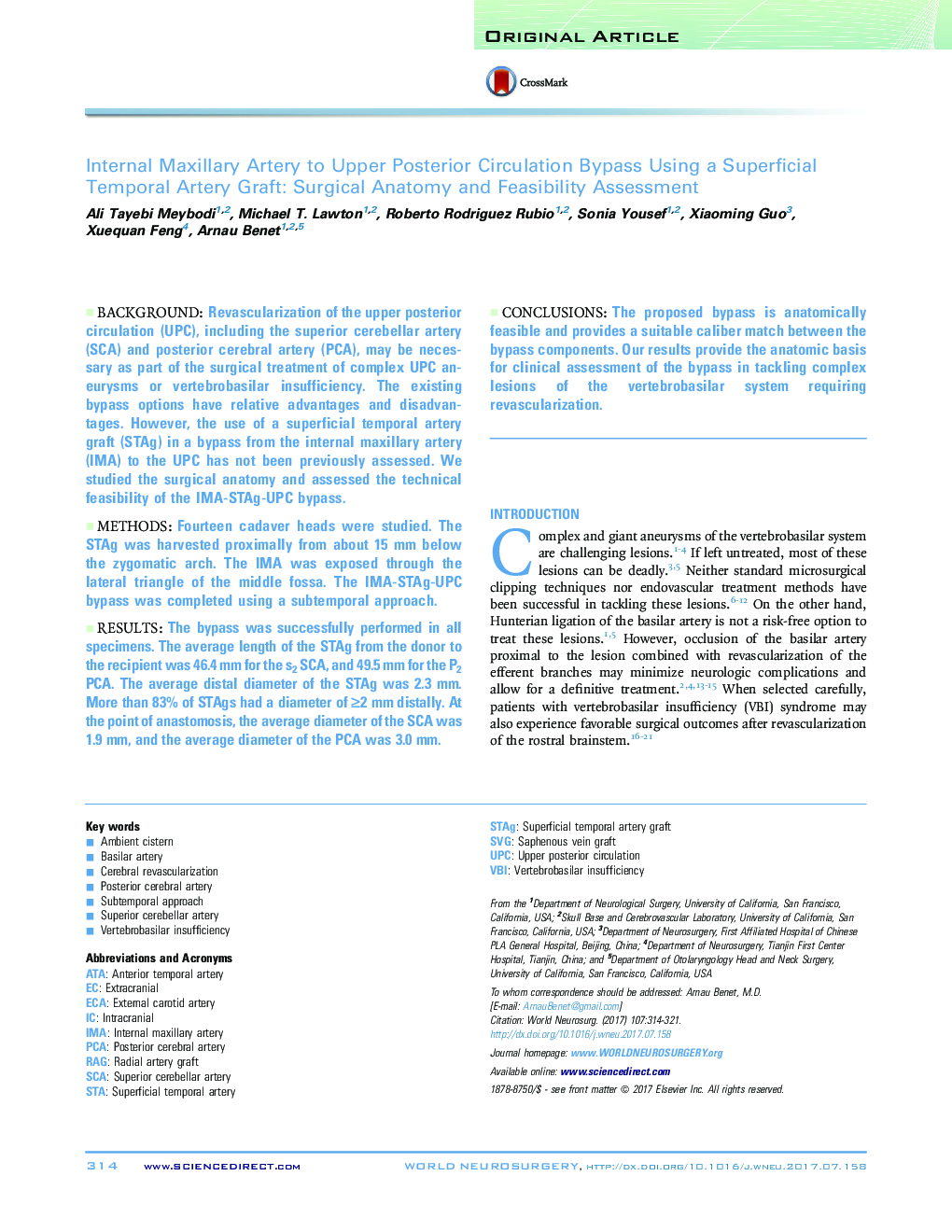| Article ID | Journal | Published Year | Pages | File Type |
|---|---|---|---|---|
| 5633888 | World Neurosurgery | 2017 | 8 Pages |
BackgroundRevascularization of the upper posterior circulation (UPC), including the superior cerebellar artery (SCA) and posterior cerebral artery (PCA), may be necessary as part of the surgical treatment of complex UPC aneurysms or vertebrobasilar insufficiency. The existing bypass options have relative advantages and disadvantages. However, the use of a superficial temporal artery graft (STAg) in a bypass from the internal maxillary artery (IMA) to the UPC has not been previously assessed. We studied the surgical anatomy and assessed the technical feasibility of the IMA-STAg-UPC bypass.MethodsFourteen cadaver heads were studied. The STAg was harvested proximally from about 15 mm below the zygomatic arch. The IMA was exposed through the lateral triangle of the middle fossa. The IMA-STAg-UPC bypass was completed using a subtemporal approach.ResultsThe bypass was successfully performed in all specimens. The average length of the STAg from the donor to the recipient was 46.4 mm for the s2 SCA, and 49.5 mm for the P2 PCA. The average distal diameter of the STAg was 2.3 mm. More than 83% of STAgs had a diameter of â¥2 mm distally. At the point of anastomosis, the average diameter of the SCA was 1.9 mm, and the average diameter of the PCA was 3.0 mm.ConclusionsThe proposed bypass is anatomically feasible and provides a suitable caliber match between the bypass components. Our results provide the anatomic basis for clinical assessment of the bypass in tackling complex lesions of the vertebrobasilar system requiring revascularization.
